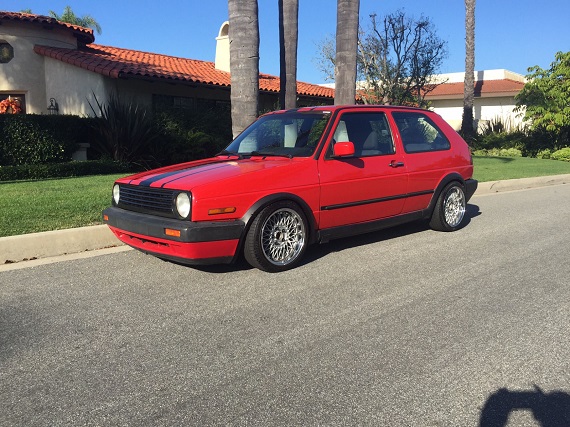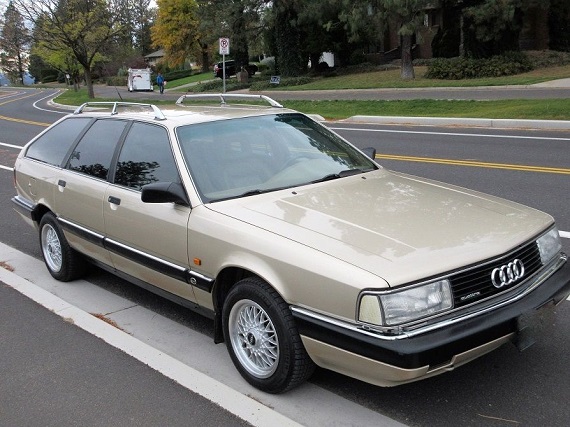It’s hard to say which is more popular – S50/52 swaps into E30s or VR6s into everything Volkswagen. But there’s a reason they’re so popular; they’re relatively cheap and they work. Can you achieve VR-power levels in a 9A 16V? Sure. Will it cost you and be a pretty compromised road motor? Yes, so suddenly the appeal of the ubiquitous VR-swap makes a bunch of sense. The results here turn what was a butch looking but relatively slow 8 valve GTI into a performance machine. That’s helped by a dose of performance parts including a trick Schrick intake, but it’s the supercharger that will really motivate you here. With over 100% more power the ride should be exhilarating!
Author: Carter
Here at GCFSB, we feature a lot of cars. Since I started writing for this site, I’ve composed some 1,773 articles, a fair amount of which cover more than one car. So it would be easy to forget that you’d already seen a car. That would especially be the case if a fair amount of time had passed since you last saw it and it was a relatively plain-jane looking model.
Enter this 1989 535i in Cirrus Blue Metallic. Outside of Hartge wheels, it’s pretty unassuming. That is, except for the “Dinan” badge on the left side of the trunk.
It’s that Dinan badge which unlocks a world of performance that otherwise is the domain of M models, and this sleeper package with low reported miles seems to be a pretty compelling alternative. Immediately, I recognized this car but knew it had been a bit since I last saw it. Since it was originally featured in March of 2014, very little has changed – the seller utilized the same photos and much of the same description from the original ad, disappointingly. He reports about 500 more miles in two and a half years, and unsurprisingly the price has dropped little. The auction is no reserve with an $11,250 starting bid – only about $750 less than the original ask. As the market on E34s really hasn’t improved greatly since then outside of some exceptional M5s, I’d wager this automatic 535i – even with the Dinan provenance – will have trouble this time around, too.
CLICK FOR DETAILS: 1989 BMW 535i Dinan Turbo on eBay
The below post originally appeared on our site March 11, 2014:
1 CommentIt’s funny how priorities change. A decade ago, I would not have given a second look to a 528e. Growing up with a E28 M5 in the garage created both an appreciation for the E28 and the dichotomous dismissal of lower range vehicles. Sure, the M5-look 535is was cool, and alongside the M5 we even had a very nice ’85 535i that was a pretty good driver. But below that? No, I seldom gave the 533i, 528e or even 524td a second look on the road. Today, though? Even if it’s not a performance car by most standards, a survivor 528e is certainly worth a second look:
CLICK FOR DETAILS: 1983 BMW 528e on eBay
Comments closedWe have an interesting lineup of Porsches, Audis and a sprinkling of Mercedes-Benz and BMW in the most recent additions to our value guide. Two…
Comments closedAfter the legendary run of turbocharged inline-5 motors ended for U.S. customers in 1995, Audi would not deliver another S6 to these shores until 2002. When it arrived, it came in only one form – the popular Avant package. While many rejoiced that this was at the very least an option, it was still pretty expensive and not everyone loves the fast five doors (crazy though it may seem!). But Audi came very close to offering S performance in the special package which was the A6 4.2 quattro. There were many variants of the C5, and ostensibly the 6-speed manual 2.7T was the “sport” option for the chassis. But the top of the heap 4.2 40V offered you the ART/AWN V8’s torque and 300 horsepower with instant throttle response starting in 2000. Underneath the 4.2 carried a special aluminum subframe. Additionally, the all-aluminum engine was joined by specially flared fenders and hood in aluminum, “door blades” that would later be seen on S models, plus optional 17″ x 8″ Speedline (later changed to forged and polished “Fat Fives”) wheels and upgraded brakes and pads. Suspension was lowered and stiffened with the 1BE sport springs and struts in the optional Sport Package; a 20mm drop was accompanied by 30% stiffer springs, 40% stiffer shocks and larger sway bars. The combination gave a menacing appearance to the C5 that wasn’t really present in the narrow-body 2.7T. Today, the argument over which is the better chassis still rages in multiple fora, and while tuners usually love the twin turbo manual option, many others prefer the velvet hammer 4.2 which really was a defacto S6 sedan Audi never brought here:







